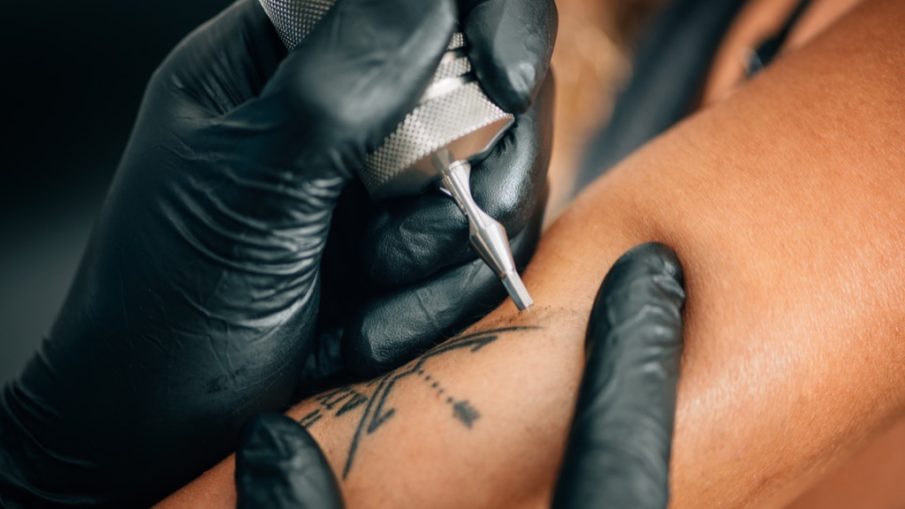A few years ago I interviewed a handyman to do some work on my house.
I noticed a teardrop tattoo at the top of his left cheek. Prior to hiring him, I searched online for what this design signified. My mouth dropped when I found out.
A teardrop tattoo can mean he murdered someone.
So I hired someone else.
Dr. Anthony Youn
A tattoo is a form of body modification where a design is made by inserting ink, dyes, and/or pigments, either indelible or temporary, into the dermis layer of the skin. The art of making tattoos is tattooing.
Plastic surgeons and dermatologists are seeing more and more people who want their tattoos removed, often because they worry that the tattoos could cause problems with employment.
According to the American Society for Aesthetic Plastic Surgery (ASAPS), the number of people undergoing laser tattoo removal increased 43% from 2011 to 2012. This is consistent with a recent survey from the United Kingdom which found that nearly one-third of people suffer from tattoo regret.
Several years ago, elaborate designs on the lower back became all the tattoo rage, until someone began calling them “tramp stamps.” Now I suspect that thousands of women (and maybe even a few unfortunate men) regret getting them.
Other tattoo fads which have come and gone include the barbed wire around men’s arms and the Chinese letters which may, or may not, mean what you think they do. And it’s not just the common folk who regret their tattoos. Several celebrities have taken steps to have their tattoos removed.
Johnny Depp committed the most common tattoo faux pas: he inked then-girlfriend Winona Ryder’s name on his shoulder. A short time later they broke up, prompting Depp to morph “Winona Forever” into “Wino Forever.”
Megan Fox recently underwent laser treatments to remove the massive Marilyn Monroe tattoo on her arm. And some celebs have even embarrassingly enhanced their bodies with typos. Actress Hayden Panettiere had the Italian phrase “Vivere senza rimpianti” (“living without regret”) inked on her side, but “rimpianti” was misspelled.
– Tattoos can also cause significant medical problems. A 2012 article in the New England Journal of Medicine described contaminated ink causing infections of nontuberculous Mycobacteria (NTM). These infections are extremely difficult to treat. If weeks of antibiotics don’t eradicate the problem, then the tattoo must be removed. Reports of allergic reactions or other, less serious skin infections are also described in the medical literature.
– Laser treatments are currently the most common and effective method for removing tattoos. Each laser targets a specific color in the ink, so the simpler the tattoo, the easier it’s eradicated.
– Most tattoos require at least three to four treatments, spaced eight weeks apart, to remove. Costs can range from several hundred to several thousand dollars, depending on the size and location of the tattoo.
– Because laser tattoo removal uses heat to destroy the dyes, there’s no guarantee that it won’t leave behind scarring, discoloration, or an outline of the previous design. The treatments can also be quite painful, akin to someone snapping a rubber band at your skin.
– So if you’re considering permanent ink, take the necessary steps to reduce your risk of tattoo regret. Make sure your tattoo salon is licensed and clean. The needles and ink should be sterile and used only on you. Any dilution of the inks should be done with sterile liquids.
– And make sure that you truly want this design on your body for the rest of your life. Ask yourself: Do you really want a permanent reminder of what may be a temporary feeling?
Don’t make the mistake that one of my patients did. She had a tattoo placed on her lower abdomen when she was single and in her 20s. Thirty years later, she was a grandmother who desperately wanted it removed.
So I asked her, “Just how bad is it?”
Very bad.
She pulled down the waist of her pants to reveal the following words, in large lettering: “Dinner is served.”
Dr. Anthony Youn is a plastic surgeon in metro Detroit. He is the author of “In Stitches,” a humorous memoir about growing up Asian-American and becoming a doctor.



